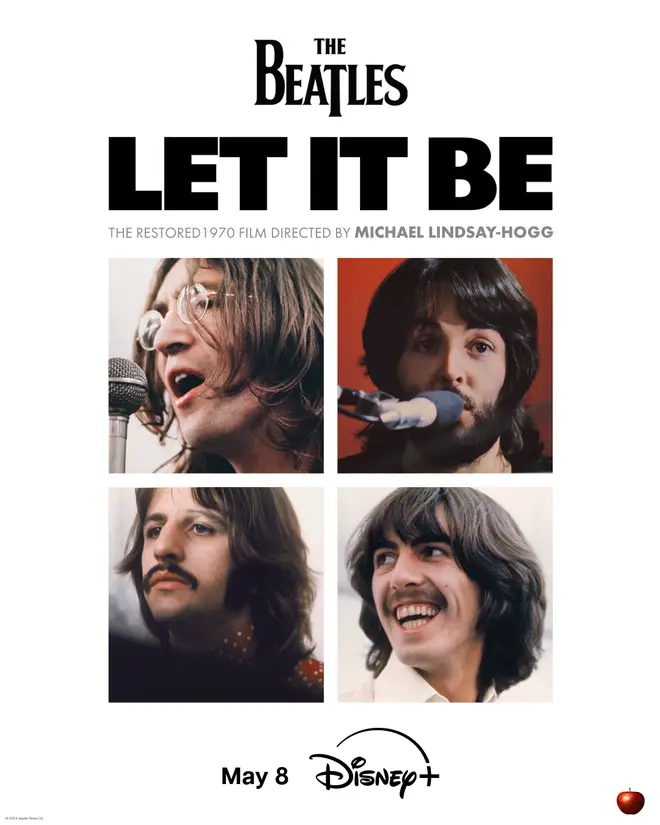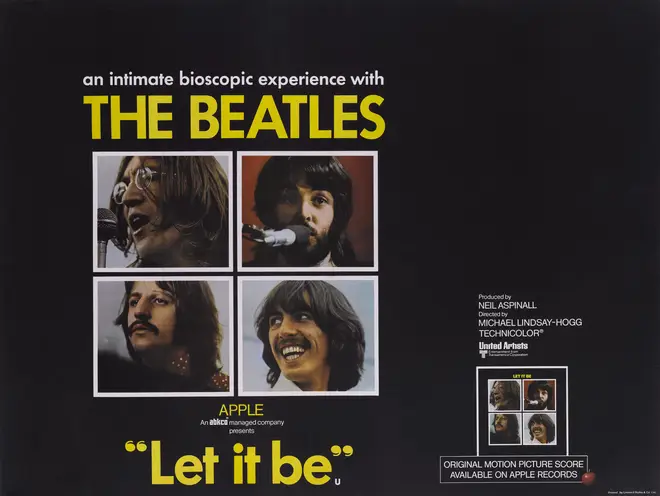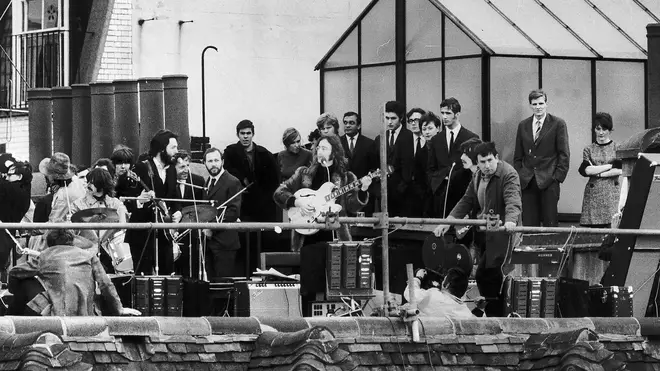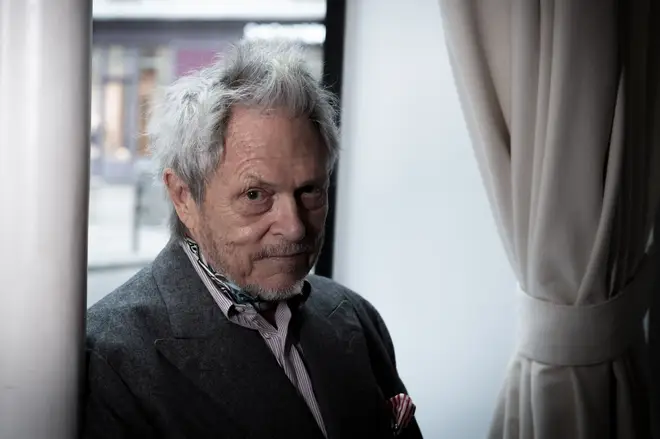On Air Now
Gold's 40 Minutes Non-Stop 7pm - 10pm
1 May 2024, 09:11

Let It Be – trailer for the remastered 1970 Beatles movie
At last...
During their remarkable decade together, The Beatles made five very different films.
Their debut was the instant and enduring classic A Hard Day's Night in 1964, followed almost immediately by the in-colour Help! a year later.
Then came the initially panned made-for-TV Magical Mystery Tour and animated Yellow Submarine, which was mainly voiced by Beatles impersonators rather than the band themselves.
Lastly, there was Michael Lindsay-Hogg's controversial documentary Let It Be, which ostensibly soundtracked the band's album of the same name.
The film was made – and album primarily recorded – before The Beatles made Abbey Road, but it was only released in May 1970, a month after the band split.

The Beatles - A Hard Day’s Night movie trailer
Beatles fans have been spoiled in recent years, with everything from a moody demo of 'Yellow Submarine', 12+ minute versions of 'Helter Skelter' and even the final "new" song 'Now and Then', so there was some excitement when the band's social channels started teasing something new this month.
There was disappointment from some when the next new Beatles product was revealed to be... the 54-year-old Let It Be movie, which is coming to Disney+ on May 8, 2024.
Wasn't that film completely superseded by Peter Jackson's epic three-part Get Back film, anyway? Should we care about the release of a documentary that's over half a century old now? Absolutely, and here's why.

Firstly, while you may have seen Let It Be back in 1970, or on a dodgy VHS copy since then, you certainly won't have seen it looking anything like this.
The film was given a shoddy transfer and badly re-cropped for TV screen when released on VHS (remember VHS?) Betamax (remember Betamax?) anhd LaserDisc (remember LaserDisc?) 1981.
The following year's CED videodisc (we've never even heard of a CED videodisc) was no improvement. And since then the film has disappeared, with no official video re-release, no DVD, BluRay or streaming.

The Beatles, Get Back and London: on the trail of a timeless story
Anything you might have picked up at the market or seen on YouTube is likely an umpteenth-generation copy that looks it. From the looks of the trailer at the top of this page, the new old Let It Be will both look and sound absolutely stunning.
That's because for the new remastered Let It Be release, not only have they gone back to the original 16mm negative, but Peter Jackson's team of experts have also remastered the sound using the special MAL de-mixing technology used on the Get Back series.
Ah yes, Get Back. Some fans think that Get Back, meticulously pieced together from outtakes from Michael Lindsay-Hogg's 1970 film, was a corrective to Let It Be. The "true" story of the Get Back sessions that put right the "lie" of Let It Be.

But ever since he started that project, Peter Jackson has been adamant that his films were only ever meant to serve as an accompaniment to the original Let It Be, not a replacement.
Indeed, when Jackson's film was first announced, a restored Let It Be was announced at the same time... it's just been a little longer coming.
"I'm absolutely thrilled that Michael’s movie, Let It Be, has been restored and is finally being re-released after being unavailable for decades,” said Jackson.

Let It Be - 1s Preview
"I was so lucky to have access to Michael’s outtakes for Get Back, and I’ve always thought that Let It Be is needed to complete the Get Back story.
"Over three parts, we showed Michael and The Beatles filming a groundbreaking new documentary, and Let It Be is that documentary – the movie they released in 1970."
He added: "I now think of it all as one epic story, finally completed after five decades. The two projects support and enhance each other: Let It Be is the climax of Get Back, while Get Back provides a vital missing context for Let It Be.
"Michael Lindsay-Hogg was unfailingly helpful and gracious while I made Get Back, and it’s only right that his original movie has the last word... looking and sounding far better than it did in 1970.”

Watch the official trailer for The Beatles: Get Back on Disney Plus
For his part, Michael said: "Let It Be was ready to go in October/November 1969, but it didn’t come out until April 1970. One month before its release, The Beatles officially broke up.
"And so the people went to see Let It Be with sadness in their hearts, thinking, 'I'll never see The Beatles together again. I will never have that joy again', and it very much darkened the perception of the film.
"But, in fact, how often do you get to see artists of this stature working together to make what they hear in their heads into songs."

He added: "And then you get to the roof and you see their excitement, camaraderie and sheer joy in playing together again as a group and know, as we do now, that it was the final time, and we view it with full understanding of who they were and still are and a little poignancy.
"I was knocked out by what Peter was able to do with Get Back, using all the footage I'd shot 50 years previously."
And remember: Let It Be wasn't shot or edited as a post-split look at the disintegrating Beatles, despite how audiences felt watching it for the first time. They even went on to make Abbey Road.
In fact, there's a strong argument that it's Jackson's Get Back – made in the 2020s – is the more historically compromised document.

Peter Jackson stripped away guitar sounds to hear the honest conversations between members of The Beatles in ‘The Beatles: Get Back’
That series was pieced together half a century after the fact by someone who wasn't there when it was filmed.
Consciously or otherwise, it was informed not only by the band's split, but also their post-Beatles careers, two of the group's death, and 50 years of Beatles-inspired popular culture.
Whatever flaws it may have, Let It Be was put together at the time by someone who was with the band. Along with the original DP, Tony Richmond, Lindsay-Hogg has helped work on the new print, which will be brighter than the original and not be badly cropped for telly.
"When I finished filming it at the end of January 1969, the Beatles had not broken up," Lindsay-Hogg told Variety.

"I now recognise that my cut is a very accurate, enjoyable cinema verité of what it was like to work with the Beatles for a month in 1969."
He added: "People are still living on confused memories of what was happening back then. Let It Be is not a breakup movie. We finished it long before things blew up.
"It's a joyous movie when they were happy, performing on a rooftop. It’s f**king great.”
And, for the first time in over 50 years and in sparkling, vibrant visual and audio quality, we're getting a chance to enjoy that once more.